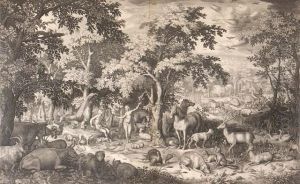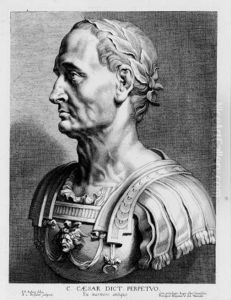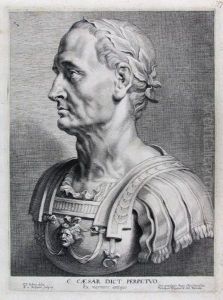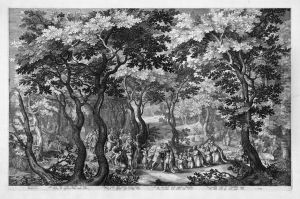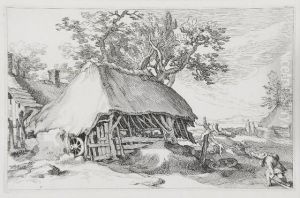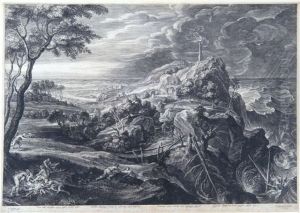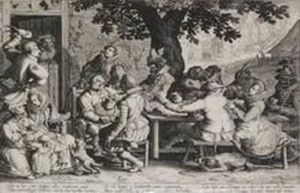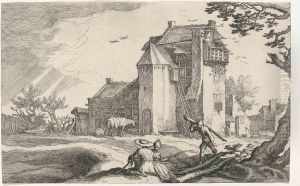Boetius Adams Bolswert Paintings
Boetius Adams Bolswert was a notable Flemish engraver born around 1580 in Bolswert, in what is now the Netherlands, though at the time it was part of the Spanish Netherlands. Not much is documented about his early life and training, but it is known that he belonged to a family of artists, with his brother Scheldt Adams Bolswert also being a prominent engraver. Bolswert's work is often associated with the city of Antwerp, which was a hub for artists and engravers during the late 16th and early 17th centuries due to the influence of the Antwerp school and its flourishing art market.
Bolswert is especially renowned for his reproductive engravings, which means he created prints after the works of other artists. His engravings were based on the works of leading Flemish painters of the time, such as Peter Paul Rubens and Jacob Jordaens. These engravings played a significant role in disseminating the Baroque style throughout Europe and contributed to the fame of the artists whose works he reproduced. Bolswert's skill in capturing the essence and detail of the original paintings was remarkable, and his prints were highly sought after by collectors and art enthusiasts of the period.
He initially worked in the style of Hendrik Goltzius, a Northern Mannerist artist, and was also influenced by the works of other contemporaries. Over time, Bolswert developed his own distinct style that was characterized by a remarkable attention to detail and a strong sense of texture and volume, which allowed him to effectively translate the dynamism and drama of Baroque paintings into the medium of printmaking.
Boetius Adams Bolswert's contributions to the field of engraving are particularly significant for their technical excellence and for their role in art history. Engravings were an essential means of reproducing and spreading artistic ideas before the advent of photography, and Bolswert's works served to reinforce the prominence of the artists he copied as well as to establish his own reputation as a master engraver. His engravings are still studied and collected today for their aesthetic qualities and historical importance.
Bolswert died in 1633 in Antwerp. Although he did not achieve the same level of fame as some of his contemporaries during his lifetime, his work continues to be appreciated for its craftsmanship and its role in the dissemination of Baroque art. His engravings are now considered important works of art in their own right and are held in numerous museum collections around the world.
